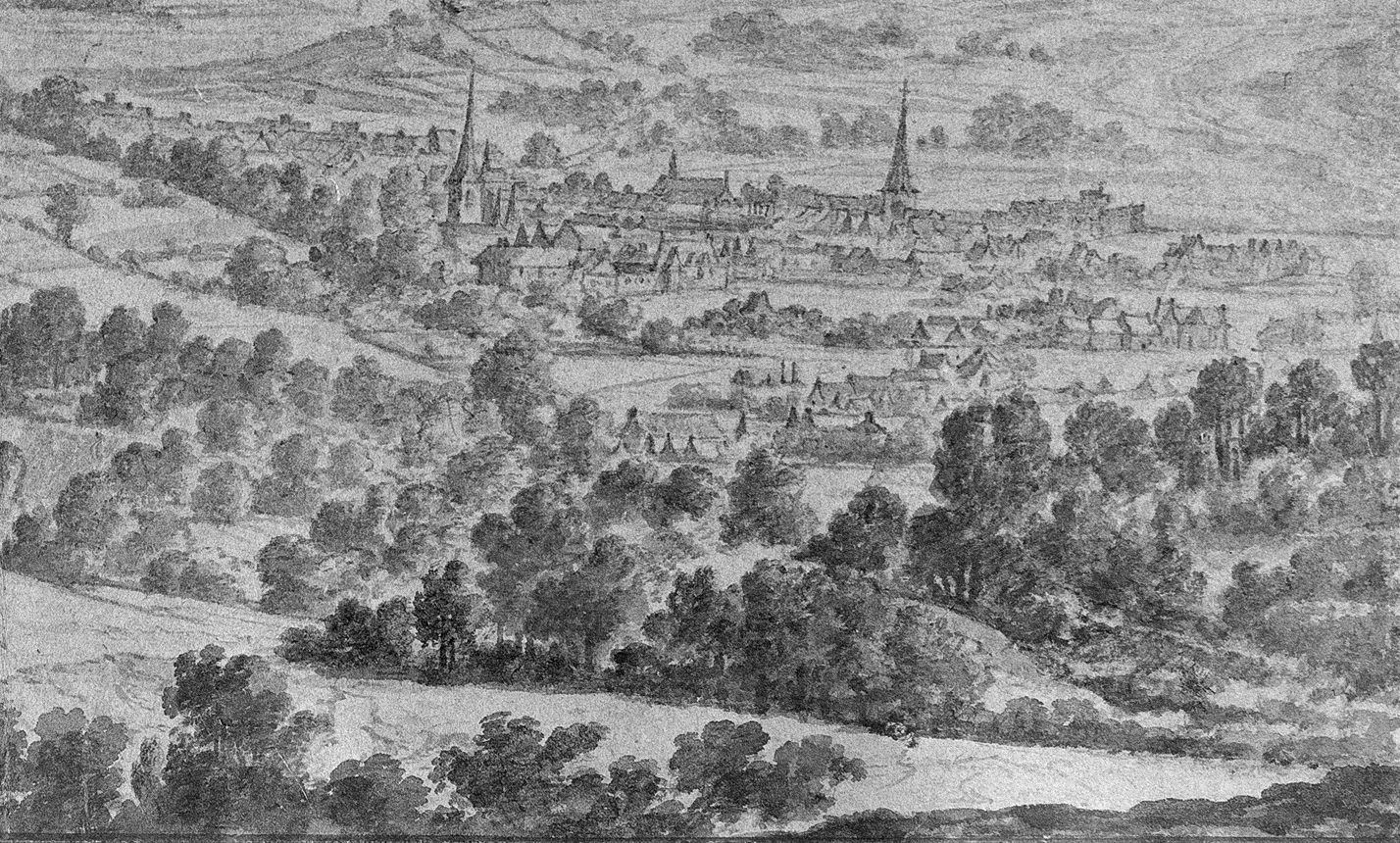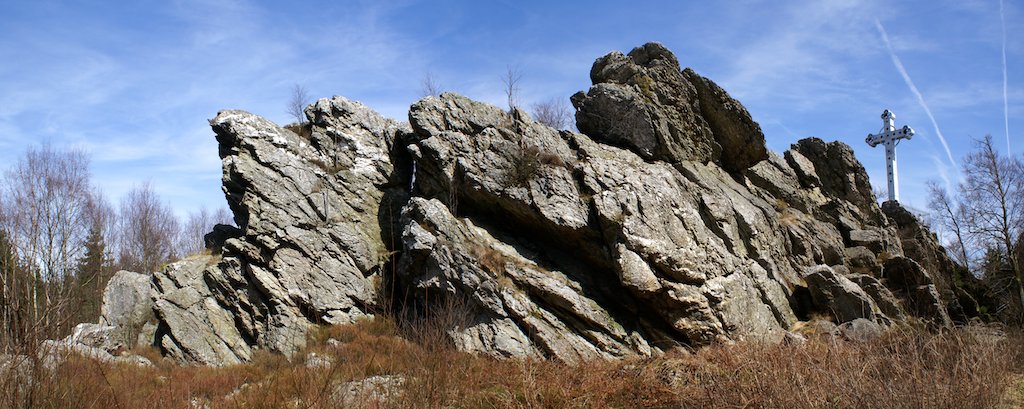In 1890, the priest of Kalterherberg, Gerhard Joseph Arnoldy (1834-1914), had the majestic six-metre-high cross erected there in memory of the so-called Apostle of the Fens, Stefan Horrichem (1607-1686). During the Thirty Years’ War in the 17th century, he had been prior of the former Premonstratensian monastery of Reichenstein near Monschau and a benefactor of the population, which had become completely impoverished by the war. In 1894, the parishioners of Kalterherberg laid out a ‘Mariengrotte’ (a shrine in honour of the Virgin Mary) there to mark the 25 year jubilee of their priest.
Today, this place of pilgrimage, founded 125 years ago by the parish of Kalterherberg, lies on Belgian territory. Until 1920, Richelsley belonged to the town of Monschau. This part of the German territory became Belgian at the same time as the section of the Vennbahn between Kalterherberg and Petersgenfeld (Raeren), while the villages between the railway and the new border remained German (forming enclaves).
It would have been logical for the forest plot on which the Cross in the Fens is located to have been integrated into the territory of the municipality of Bütgenbach (to which the villages of Leykaul and Küchelscheid belonged). Yet this was not the case: General Baltia, who was the Belgian government’s High Commissioner for the Eastern Cantons between 1920 and 1925, decided to create a new municipality: Robertville, which was detached from Waimes together with Ovifat. This new municipality received Sourbrodt and thus the area between the Schwarzbach and the Hill and the part of the territory ceded by Monschau. As compensation, Bütgenbach received a forest plot.
How can this be explained?
The only hypothesis, for which there are several indications, is the following: The First World War was the ‘Great War’ for the Belgians, in which the country had suffered to a particularly high degree. The resulting largely anti-Germanic, French-speaking elite in the Belgian state wanted at all costs to prevent the new eastern border from being occupied exclusively by German-speaking communities.
This is probably why these Fens areas were added to the new French-speaking municipality of Robertville, which was merged into the municipality of Waimes on 1 January 1977. This French-speaking municipality is thus the only one bordering Germany (Monschau, Städteregion Aachen) on a length of eight kilometres. This strip of territory also divides the territory of the German-speaking community into two parts by a strip of forest three to four kilometres wide.
For me, this cross and its location have a high, unifying symbolic power today. It stands for the hardship and suffering of the border population in the past centuries, for their Catholic roots as well as for the world wars, through which the borders in this region were arbitrarily shifted again and again. For me, however, it is also a sign of hope that the people beyond the language and national borders around this cross have transcend these old borders time and again in a spirit of openness, reaching out to each other.
Stany Noël
Walk

